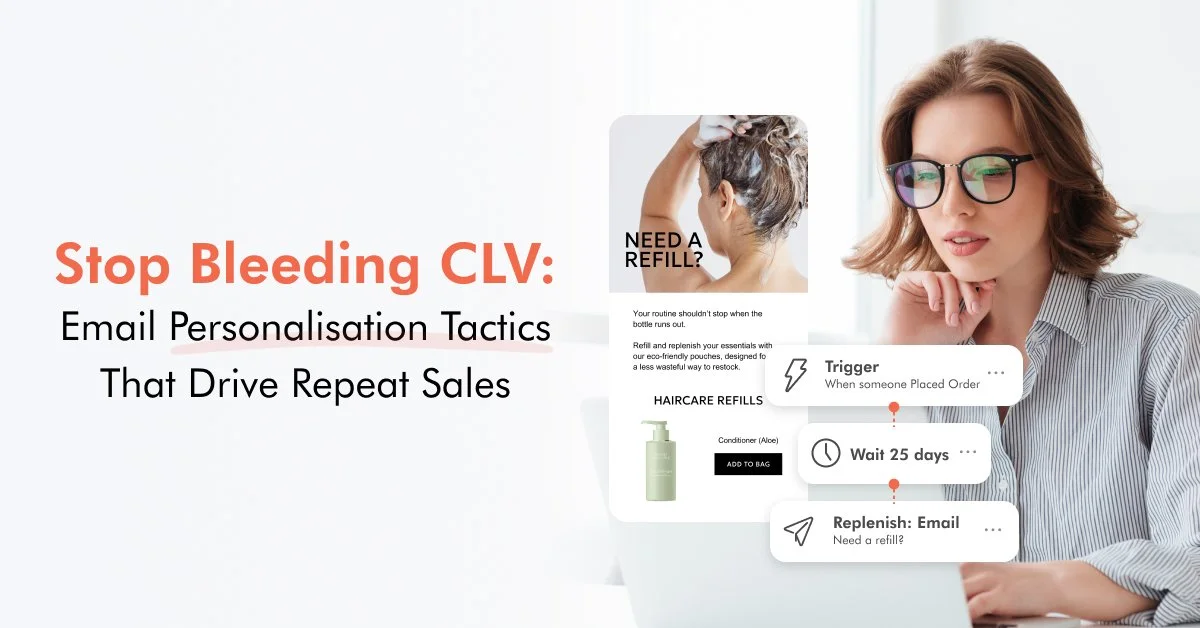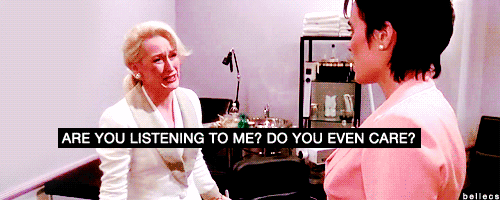Stop Bleeding CLV: Email Personalisation Tactics That Drive Repeat Sales
I’m sure you already know the deal: acquiring new customers costs 5x more than keeping existing ones. So why do DTC brands continue to invest in cold traffic while their hard-won customers make a single purchase and then drop off?
Retention isn’t just more cost-effective than acquisition, it’s also where margin lives. And personalisation is one of the most effective ways to connect with customers after their first order. We’re not just talking about standard segmentation, but true behavioural personalisation that treats each customer journey like the unique path it is.
According to a study by Epsilon, 80% of consumers are more likely to purchase from a brand that provides personalised experiences, and companies using advanced personalisation see up to a 20% increase in repeat purchase rates. In this guide, we’ll explore why your RPR (repeat purchase rate) is so important and how personalisation can help drive it up.
Why repeat purchases matter so much in e-commerce
The brutal truth about DTC unit economics is that many brands barely break even on first purchases after factoring in acquisition costs, fulfilment, and returns. Your real profit lives in purchases two, three, and beyond. Repeat customers spend 67% more than new customers on average, have 3x lower return rates, and require zero paid acquisition spend. In fact, increasing your repeat purchase rate by just 5% can lead to a 25–95% boost in profits.
When iOS updates decimated Facebook targeting and CACs skyrocketed across every channel, the brands that survived were the ones who'd built repeat purchase engines that could weather the storm (not the ones with the flashiest creatives or biggest ad budgets). In a market where first-purchase margins are razor-thin and acquisition costs continue to rise, your repeat customer rate is your lifeline to sustainable profitability.
Essential personalised flows that drive repeat purchases
Not all emails are created equal. The difference between brands hitting 20% repeat rates and those crushing 40%+ is having the right flows firing at precisely the right moments.
These flows are the ones that speak to a customer’s context: what they’ve bought, when they bought it, and what they might need next. Think beyond the welcome series. Post-purchase flows should feel like a thoughtful follow-up, not a receipt. When flows are built around the customer journey they create real moments of retention.
Focus on these to start:
Post-purchase cross-sell flows trigger based on what customers bought, not generic "customers also purchased" suggestions. If someone has purchased a skincare starter kit, for example, consider pushing advanced serums at least two weeks later when they're seeing results.
Replenishment flows are money-printing machines for consumables. Calculate individual usage patterns from purchase history and send restocks before they run out, rather than when your inventory needs to be replenished. The sweet spot is 80% through their estimated usage cycle.
Browse abandonment with purchase history context goes beyond "you left this in your cart." Reference their past purchases: "Still thinking about that serum? It pairs perfectly with the cleanser you loved from your last order."
Win-back campaigns based on purchase behaviour segment by what they used to buy and how often. Your monthly subscribers need different treatment from your seasonal shoppers. A skincare regular going quiet for 8 weeks might respond best to results-focused check-ins, whereas a supplement buyer who missed their 3-month window might need goal-reinforcement to maintain momentum.
Milestone flows can celebrate anniversaries, not just birthdays. "It's been 6 months since your first order. Here's how far you've come", with personalised product recommendations.
Loyalty flows are an underrated lever for both retention and acquisition. Think beyond points balances and birthday discounts and build flows that reinforce progress, reward key behaviours, and invite your most active customers into exclusive tiers or early access moments. For more on how to build loyalty programs that actually grow your brand, read our full guide here.
What metrics to track
You can't optimise what you don't measure. While other brands are tracking vanity metrics, here's what you should be watching:
Flow performance metrics go beyond open rates. Track flow-to-purchase conversion rates, average order value by flow, and days between flow trigger and conversion. Your post-purchase flow might have a 15% open rate but drive 40% higher AOV and that context matters.
Cohort-based repeat purchase rates show you if your personalisation is working. Track 30, 60, and 90-day repeat rates by acquisition source and first purchase category. This reveals which customer segments respond best to your flows and where your gaps exist.
Customer lifetime value progression measures how your flows impact long-term value. Are customers triggered by your replenishment flow worth twice as much over 12 months? That's the data that justifies your automation investment.
Engagement decay patterns help you time interventions perfectly. Track how engagement drops after purchase 1, 2, and 3 to identify when customers typically churn. Then, trigger win-back flows before they ghost you.
Revenue attribution by flow breaks down which automated sequences drive the most revenue, not just the most clicks. Your browse abandonment may result in sending more emails, but your milestone flows could generate three times more revenue per recipient.
The goal isn't to track everything, but to track the things that actually predict and drive repeat purchase behaviour. We published a whole guide about the most important metrics for retention. Give it a read here.
Final Thoughts
Personalisation is the difference between sustainable growth and burning cash on endless acquisitions in email marketing today. When you treat each customer journey individually, you'll build a profit engine that compounds with every purchase, every interaction, every perfectly-timed message.
The brands winning at the retention game aren't the ones with the biggest budgets, but the ones who've cracked the code on making every automated touchpoint feel relevant and valuable.
Here's your homework: audit your current automations this week. Pick either your post-purchase sequence or win-back flow and add a layer of behavioural personalisation (if you don’t already have one). Reference your customers’ actual purchase history, segment by buying patterns, or time your messaging to their individual usage cycles. Start small, measure the impact, then scale what works.
Your customers are already telling you exactly what they want through their actions. The question is: are you listening?



